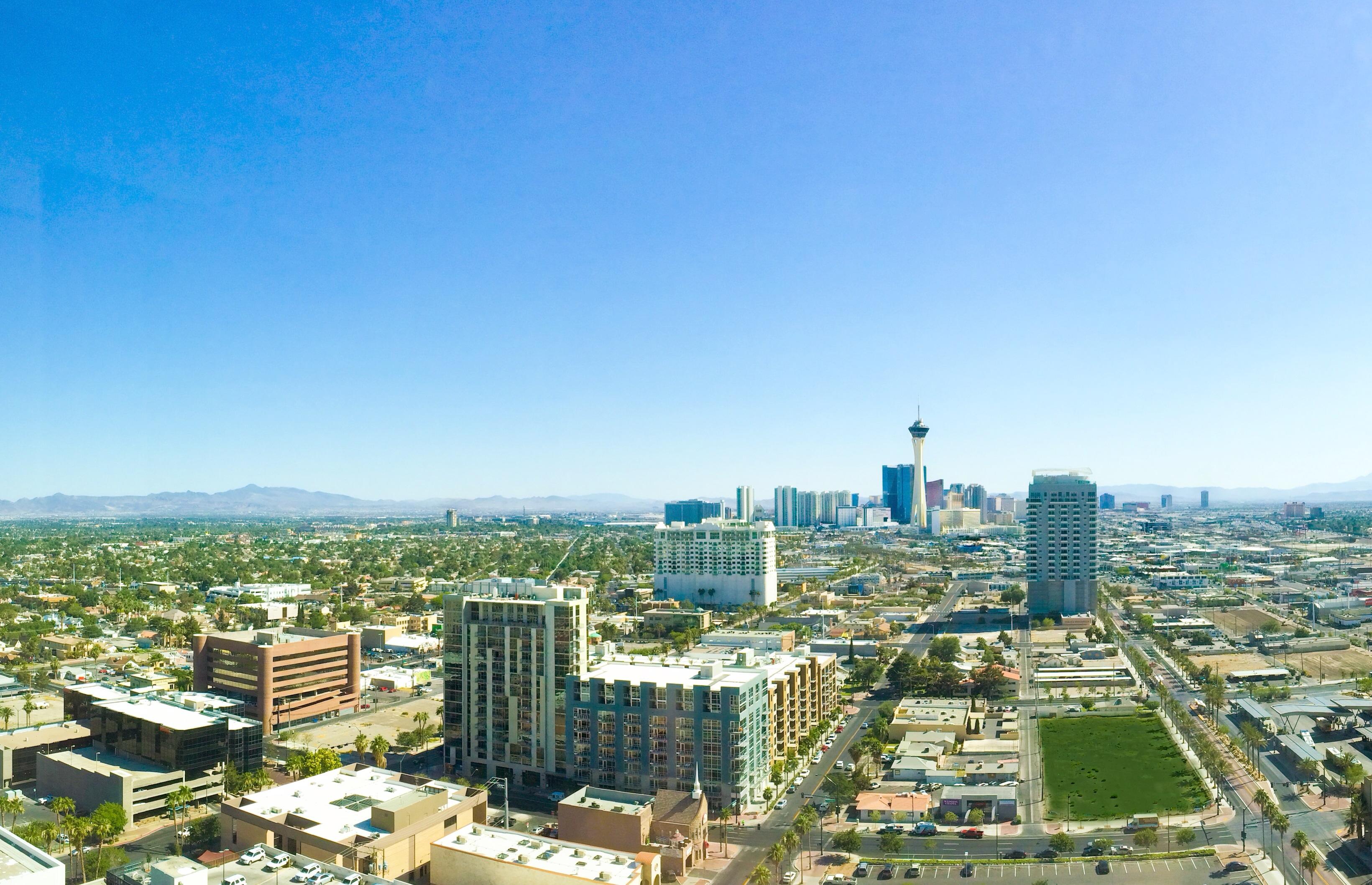Title: Las Vegas Residential Sales: A Market Overview
Introduction:
As the sun sets over the glittering Strip, casting vibrant reflections on the tranquil waters of nearby lakes, the Las Vegas housing market pulsates with a life of its own. Beyond the bright lights and bustling casinos lies a dynamic residential landscape, characterized by shifting trends, evolving demographics, and a diverse array of properties. Whether you’re a potential homeowner lured by the promise of entertainment and adventure, an investor eyeing lucrative opportunities, or simply curious about the local economy’s pulse, understanding the intricacies of Las Vegas residential sales is key. In this article, we will delve into the latest statistics, explore emerging market trends, and paint a comprehensive picture of the unique factors shaping the city’s real estate scene. Join us as we uncover what makes Las Vegas a compelling player in the residential market, where the allure of the desert meets the heart of home.
Market Trends Shaping Las Vegas Residential Sales
As the Las Vegas residential market evolves, several key trends are emerging that are reshaping buyer behavior and property values. First and foremost, migration patterns are a significant factor, with an increase in residents relocating from high-cost states in search of more affordable living options. This influx not only drives demand but also leads to increased competition among buyers, pushing up prices in desirable neighborhoods. Additionally, remote work has created a shift in housing preferences, with buyers now prioritizing larger homes with dedicated office spaces, as flexibility allows them to live farther from their workplaces. Other notable factors include:
- Interest Rates: Fluctuating mortgage rates continue to influence purchasing power.
- Luxury Market Surge: There’s been a noticeable uptick in demand for high-end properties.
- Tech Integration: Smart home features are more sought after as buyers look for modern conveniences.
Furthermore, regional economic development plays a pivotal role in attracting new residents. With new industries emerging, the promise of job opportunities is appealing, making homeownership a viable option for many first-time buyers. Similarly, infrastructure improvements, including transportation and public amenities, are enhancing the overall livability of the area, creating a more attractive environment for potential homeowners. The following table encapsulates some of the recent statistics influencing the market:
| Metric | Current Value |
|---|---|
| Median Home Price | $400,000 |
| Annual Price Growth | 12% |
| Days on Market | 30 Days |

Understanding Buyer Preferences and Behaviors
Understanding the intricacies of buyer preferences is crucial in the bustling real estate market of Las Vegas. Each demographic, from first-time homebuyers to seasoned investors, exhibits unique inclinations that shape their property choices. For instance, younger buyers often lean towards modern aesthetics and energy-efficient homes, while retirees may prioritize accessibility and proximity to healthcare services. By analyzing these trends, real estate agents and developers can tailor their offerings to meet the specific demands of various segments.
Additionally, the behaviors linked to these preferences reveal valuable insights into purchasing decisions. Factors such as location, amenities, and price point play significant roles in shaping buyer interest. Consider the following aspects when examining buyer behavior:
- Location: Proximity to schools, entertainment, and public transport.
- Community: Desired neighborhood characteristics, such as safety and social dynamics.
- Technological Influence: The impact of online listings and virtual tours on purchasing decisions.
This understanding not only aids in effective marketing strategies but also enhances the overall buying experience, ultimately leading to higher satisfaction rates among homeowners.

Navigating Inventory Challenges in a Competitive Landscape
The competitive landscape of Las Vegas residential sales requires a strategic approach to inventory management. As demand surges, understanding the intricacies of supply can significantly influence market dynamics. Key factors to consider include:
- Current housing inventory levels
- Seasonal trends impacting availability
- Pricing strategies in response to market fluctuations
Amidst tight competition, real estate professionals must also leverage technology and data analytics to optimize their inventory strategies. Utilizing tools to forecast trends and consumer behavior can lead to more informed decisions. Essential elements to incorporate into your strategy are:
- Real-time market analysis
- Effective marketing campaigns targeting potential buyers
- Collaboration with local builders and developers to identify upcoming listings
| Market Factor | Current Status |
|---|---|
| Inventory Level | Moderate |
| Average Days on Market | 30-45 Days |
| Price Trend | Upward |

Strategic Insights for Investors and Homebuyers in Las Vegas
As the Las Vegas housing market continues to evolve, investors and homebuyers alike must stay vigilant in identifying opportunities amid changing trends. Key factors currently influencing the market include:
- Population Growth: The influx of residents drawn to employment opportunities and a relatively lower cost of living presents a robust demand for housing.
- Interest Rates: With fluctuating mortgage rates, potential buyers should carefully assess their financing options to capitalize on favorable lending conditions.
- Flipping and Rental Investments: Properties in up-and-coming neighborhoods offer strong potential for flipping, while rentals in established areas remain a safe choice amidst rising rental rates.
Investors should also pay attention to desired neighborhood factors, such as proximity to amenities and school districts, as these can significantly enhance property value. A closer look at recent sales data showcases notable trends:
| Neighborhood | Average Home Price | Sales Growth (Year-Over-Year) |
|---|---|---|
| Summerlin | $450,000 | 12% |
| Henderson | $400,000 | 10% |
| Downtown Las Vegas | $300,000 | 15% |
Q&A
Q&A: Las Vegas Residential Sales – A Market Overview
Q1: What is the current state of the residential real estate market in Las Vegas?
A1: The Las Vegas residential real estate market is experiencing a dynamic shift. With a blend of rising property values and fluctuating inventory levels, the market is evolving. While we’ve seen an uptick in home prices, a slight slowdown in appreciation has also been noticed, leading to a more balanced environment for both buyers and sellers.
Q2: How have home prices trended in recent months?
A2: Home prices in Las Vegas have shown resilience, with a modest increase over the past few months. However, this growth isn’t as aggressive as in previous years. It’s a reminder that the market is stabilizing after significantly high demands. The median home price continues to hover around $400,000, but local variations can lead to significantly different experiences in different neighborhoods.
Q3: What factors are driving the changes in the Las Vegas housing market?
A3: A cocktail of factors influences the Las Vegas housing market. Economic growth in the area, the influx of new residents, and the thriving job market in sectors like technology and entertainment are key contributors. Additionally, rising interest rates and increased building supplies have started to temper buyer enthusiasm, further shaping the current market landscape.
Q4: Are there particular neighborhoods in Las Vegas that stand out in terms of residential sales?
A4: Absolutely! Neighborhoods like Summerlin, Henderson, and the Arts District have garnered attention for their unique offerings and amenities. Summerlin is known for its family-friendly atmosphere and outdoor activities, while Henderson boasts a mix of suburban charm and vibrant culture. The Arts District attracts those seeking an urban lifestyle with local shops and galleries, making it a hotspot for both young professionals and artists.
Q5: What should prospective buyers keep in mind when looking in this market?
A5: Prospective buyers should be prepared for a competitive landscape. It’s essential to set a realistic budget, get pre-approved for a mortgage, and stay informed about the latest market trends. Working with a knowledgeable local real estate agent can provide insights and help navigate potential bidding wars. Patience and flexibility in wish lists can also go a long way in securing the right property.
Q6: How has the rental market in Las Vegas been affected by residential sales trends?
A6: The rental market in Las Vegas is also seeing a transformation. As home prices rise, many residents find it more feasible to rent rather than buy, leading to increased demand for rental properties. Consequently, rental prices have experienced upward pressure, contributing to a competitive rental environment that reflects the dynamics of the sales market.
Q7: What does the future hold for Las Vegas residential sales?
A7: The future of residential sales in Las Vegas appears cautiously optimistic. While cooling trends may lead to more favorable conditions for buyers, long-term growth is expected as the area’s economy flourishes. Real estate professionals anticipate gradual improvements in availability, which can help alleviate some pressures in the marketplace. the Las Vegas market continues to be an intriguing landscape for investment and housing options.
Q8: How can interested investors approach the Las Vegas residential market?
A8: Investors should conduct thorough market research, focusing on emerging neighborhoods, rental demand, and trends impacting occupancy rates. Building relationships with local real estate experts and staying ahead of city development plans can provide a competitive edge. Long-term holds are often encouraged in this evolving market, as sustainable growth appears likely in the years to come.
This Q&A format provides a balanced and informative overview of the Las Vegas residential sales market while maintaining a neutral tone and creative flair.
To Wrap It Up
As we conclude our exploration of the dynamic landscape of residential sales in Las Vegas, it’s clear that this vibrant city continues to evolve, driven by economic trends, shifting demographics, and a diverse array of housing options. Whether you’re a seasoned investor, a first-time homebuyer, or simply a curious observer, understanding the nuances of this market can empower you to make informed decisions. As the neon lights of the Strip cast their glow over a city replete with potential, the local real estate market stands as a testament to resilience and opportunity. With the promise of growth and innovation on the horizon, Las Vegas remains an intriguing destination for those looking to plant roots or reap the benefits of a thriving market. As the rhythm of the city pulses on, so too will the opportunities within its residential sales sector—an ever-changing tapestry waiting for the next chapter to unfold.


